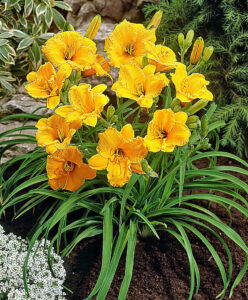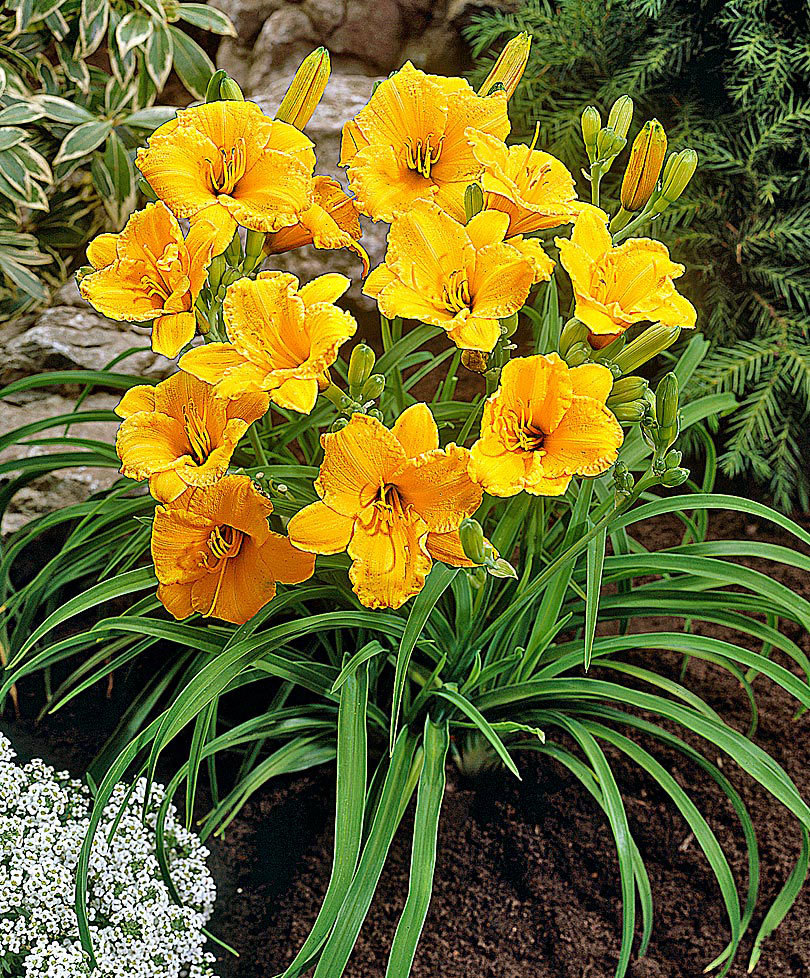Description
 Hemerocallis ‘Stella de Oro’
Hemerocallis ‘Stella de Oro’
‘Stella de Oro’ features profuse 2.75-inch diameter yellow flowers with ruffled edges and deeper yellow throats. Flower is classified as a miniature. Flowers are borne on naked stems (scapes) above a clump of arching, linear, blade-like leaves. Individual flowers open for one day. These multiple AHS award winner has become perhaps the most popular daylily in cultivation in large part because of its compact size, vigorous growth, profuse bloom and extremely long bloom period. (Jablonski 1975.)
Common Name: daylily
Type: Herbaceous perennial
Family: Xanthorrhoeaceae
Zone: 3 to 10
Height: 0.75 to 1.00 feet
Spread: 0.75 to 1.00 feet
Bloom Time: May to August
Bloom Description: Yellow with deeper throats
Sun: Full sun to part shade
Water: Medium
Maintenance: Low
Flower: Showy, Fragrant
Attracts: Butterflies
Tolerate: Rabbit, Erosion, Air Pollution




Reviews
There are no reviews yet.